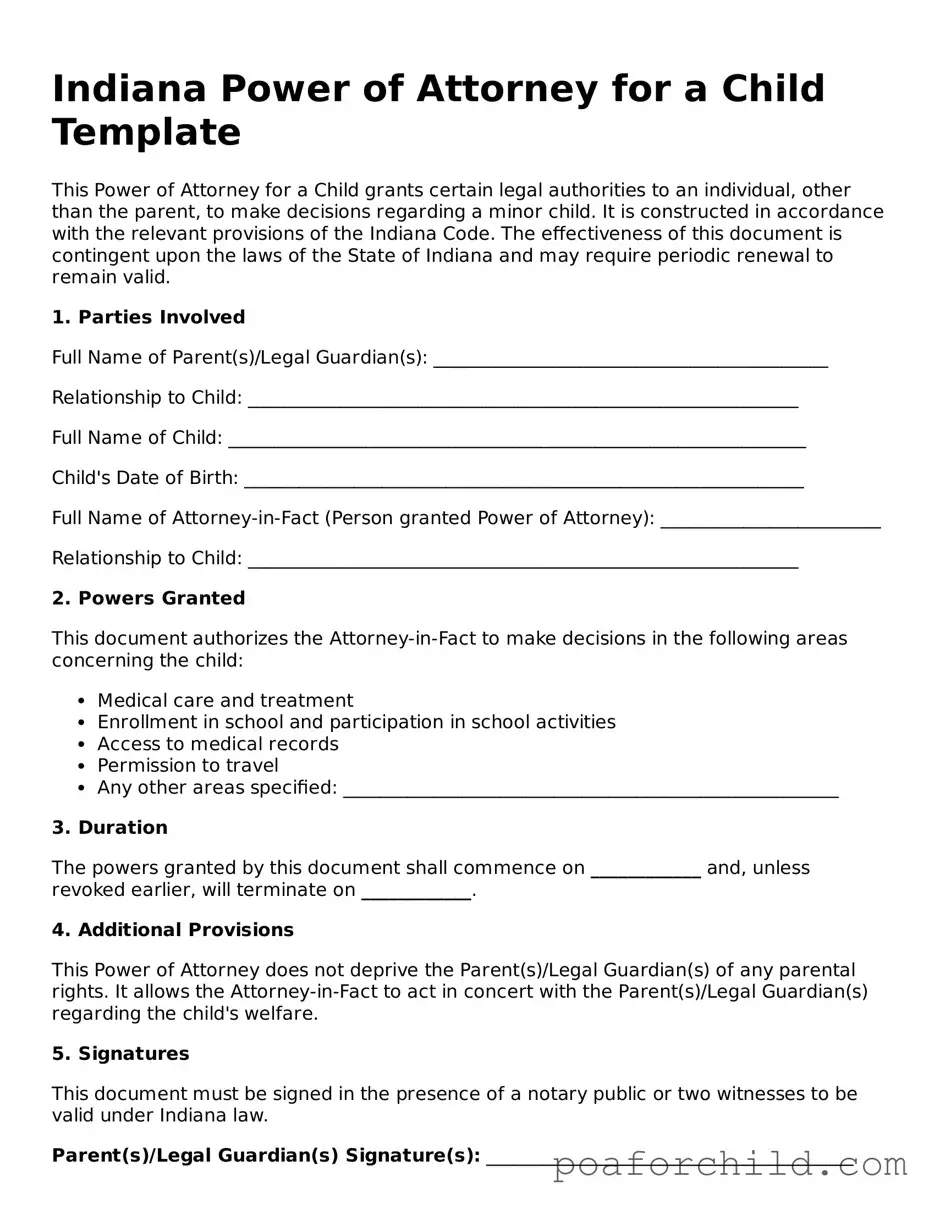Detailed Guide for Using Indiana Power of Attorney for a Child
The Power of Attorney for a Child form in Indiana serves as a legal document through which parents can authorize another person to make decisions regarding the health, education, and welfare of their child. This step-by-step guide aims to simplify the process of completing this form. By designating a trusted individual to act on behalf of their child, parents can ensure that their child receives proper care and attention during their absence.
- Begin by clearly printing the full name of the child as the subject of the power of attorney at the designated place on the form.
- Enter the child’s date of birth, ensuring accuracy for legal and record-keeping purposes.
- List the full legal names of the parent(s) or legal guardian(s) granting the power of attorney. If applicable, include both parents to substantiate mutual consent.
- Identify the full name of the individual being designated as the attorney-in-fact, the trusted person who will be making decisions on behalf of the child. This should be someone the parent(s) have complete trust in.
- Specify the powers being granted to the attorney-in-fact. It’s important to be clear about what decisions they can and cannot make. These might include decisions about the child’s education, health care, and general welfare.
- Detail any specific powers not granted or any special conditions the parent(s) wish to apply. This section allows the granting parent(s) to maintain control over certain decisions.
- Select the effective dates of the power of attorney. This section defines when the powers start and end. Some may choose to set it for a fixed period, while others may align it with a specific event.
- Review the form for completeness and accuracy. Misinformation or omissions can lead to the document being legally invalidated.
- Sign and date the form in the presence of a notary public. The notary will then add their seal or stamp, officially notarizing the document. This step is crucial for the document’s legality.
- Distribute copies of the notarized document. The parent(s), the attorney-in-fact, and any relevant institutions (such as schools or healthcare providers) should all receive a copy.
After properly filling out and notarizing the form, the designated person, now legally recognized as the attorney-in-fact, will have the authorization to make decisions on behalf of the child within the scope outlined in the form. It’s essential to keep the original document in a secure yet accessible place in case it needs to be presented to verify the attorney-in-fact’s authority. Regular communication between the parent(s) and the attorney-in-fact is recommended to ensure the child’s best interests are always served.
